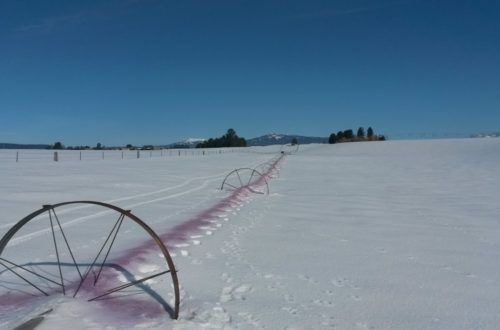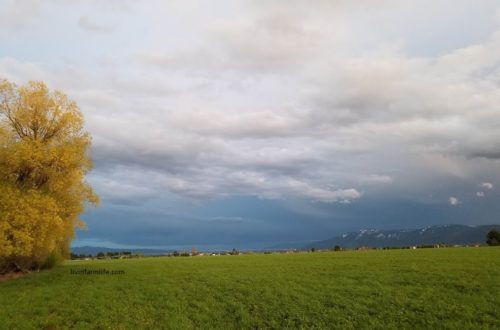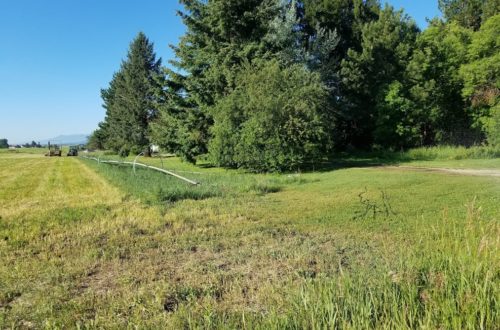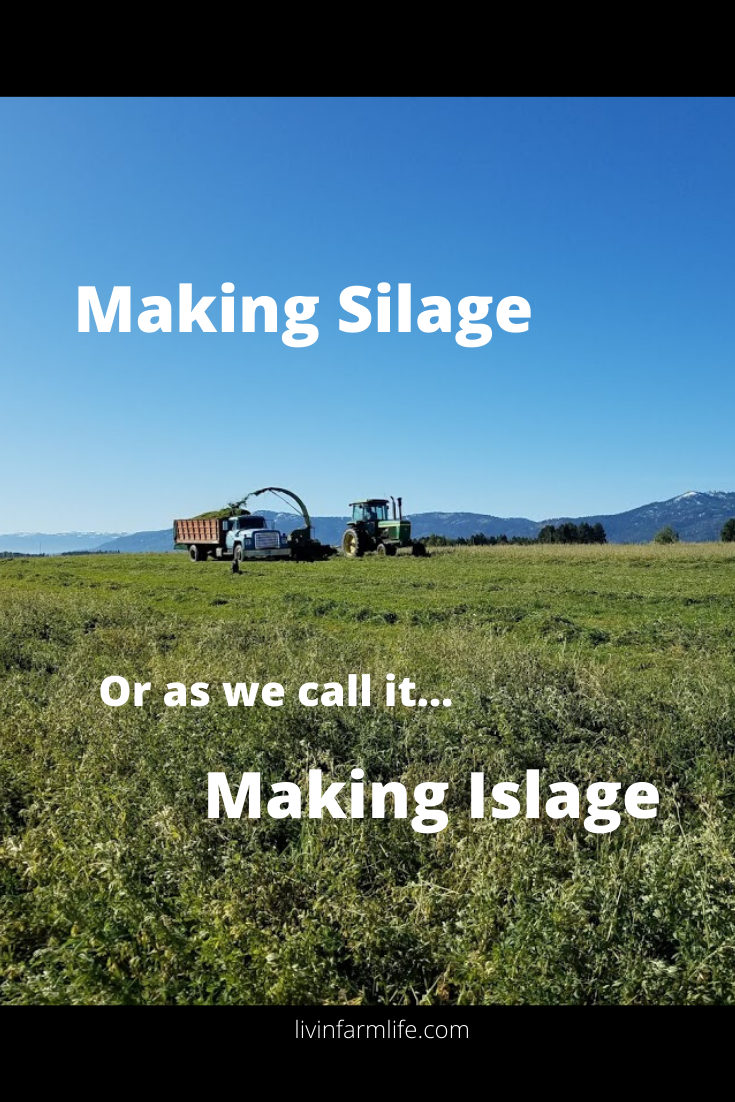
Making Silage…..or as we call it….Making Islage.
This year we made islage. What the heck is islage, you may ask. If I was to say we made silage, or even say ensilage, then you may know what I am talking about. I think it’s one of those “farm terms” that some call it this and some call it that and others call it this and that. I think I’ve even heard it called haylage. Whatever the correct terminology is, on our farm, it’s islage. Evidently that’s not a word. According to Google anyways. But, since this is my blog and I am in control, I am calling it islage. It’s easier to spell a word the way you say it, if ya know what I mean ( and yes I added it to MY dictionary so my computer would stop telling me I was spelling it wrong!)
My Farmer’s family used to make this yummy feed for their cows years ago. Then in the ’80’s, when things were tough for the farmers all around the country, they had to sell their cows to make the bankers happy, so there was no need to make it anymore. We eventually slowing got back into the cattle business but never started making islage again. My Farmer and I had talked about making it again the last few years, but had not acted on it. Until now. It seemed to be one of those things you want to do but don’t actually do until you are forced. That was this year. We had 100 acres of 2nd cutting hay yet to cut when the weather turned cold and rainy, and our window of getting hay dry in late summer in our area was gone. Without that last bit of hay, well actually last lot of hay, we did not have enough hay to feed our cows through the winter. In came the decision to make islage. To make islage you swath the hay, then pick up the windrows with a chopper machine. The hay is chopped green, so no need to wait for it to dry. As the chopper goes through the field, it loads the green chopped hay into a truck, then it is taken to the pit, dump and compacted in the pit. (At least that is the way we made it, others may do it a bit different)
In order to do this process, we first had to make sure the old equipment needed for this operation, that hadn’t been used for 30 plus years, would run. (this is one of those times that you are thankful that you did not scrap that old piece of equipment that had been sitting forever) First off was the old John Deere chopper. After pulling it out of the tall weeds, and doing a bit of greasing and adjusting, it started up and was running just like it had when it was parked. (meaning a little rough and loud, and sounded like it was going to come apart any minute, but working) The next step was getting the old dump truck running. After putting in a new battery and cleaning the points (i thinks that’s what they said they cleaned) the old Chevy fired right up. With those two machines working, we were set to make islage. Now we just needed a pit. After deciding where to put in the new pit, we dug and flattened a spot and were ready to chop some hay. This was an exciting event for me, as I had never participated in this kind of harvest. They probably green chopped hay when I first married into this farm life, but I had a town job then and did not really participate on the farm that much. (Except for potato harvest. Everyone and their dog help then!)
Here are some pictures of our green chopping. It rained and snowed on us most of the time that we were chopping. But that is ok when you are green chopping. You need the hay moist to ferment. There is a difference between fermenting and rotting. So I am told. If the hay going into the pit is to dry, I guess, it may just mold and rot, and possibly get hot and burn. Which is not good. Fermentation is what we want.
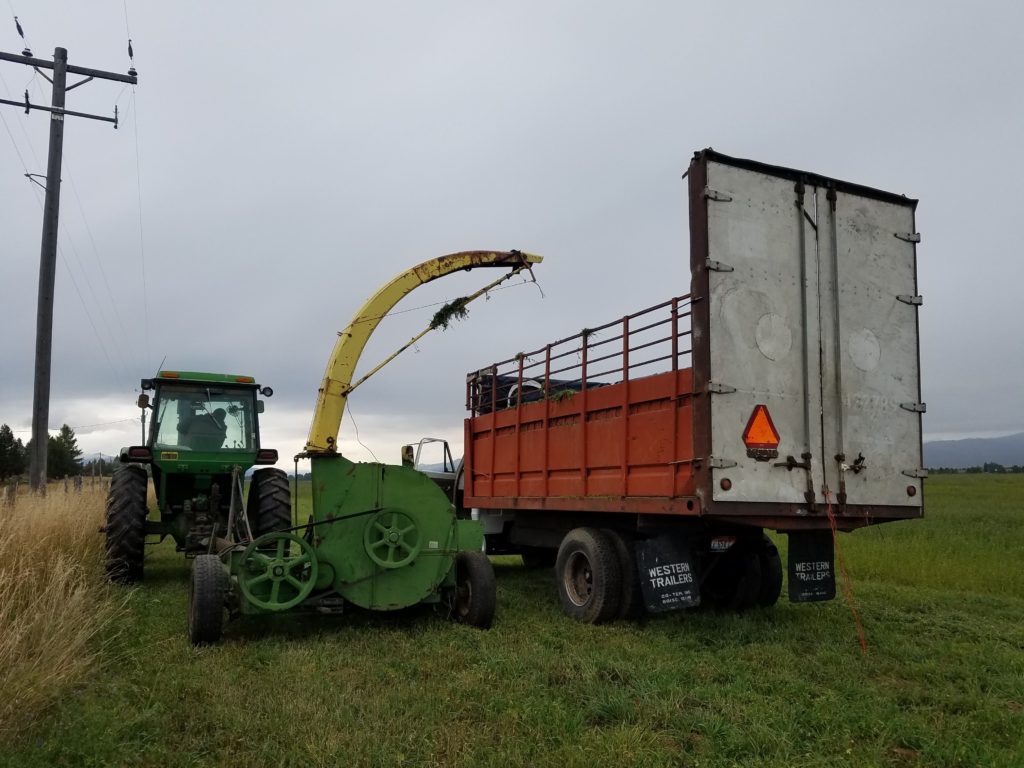
With the picture above, I should add that when working on this chopper, it really needed a new belt. You can see it good in this picture, there in the back of the machine. However, we really didn’t want to spend the money for the belt if the machine was not going to hold together. Plus, it would have taken weeks to get the belt ordered and shipped to us, and we didn’t have that much time to wait. SO we all held our breath and did not TOUCH the belt (you know, you touch it, it breaks. Murphy’s law), and it held up the whole time. Thankfully.
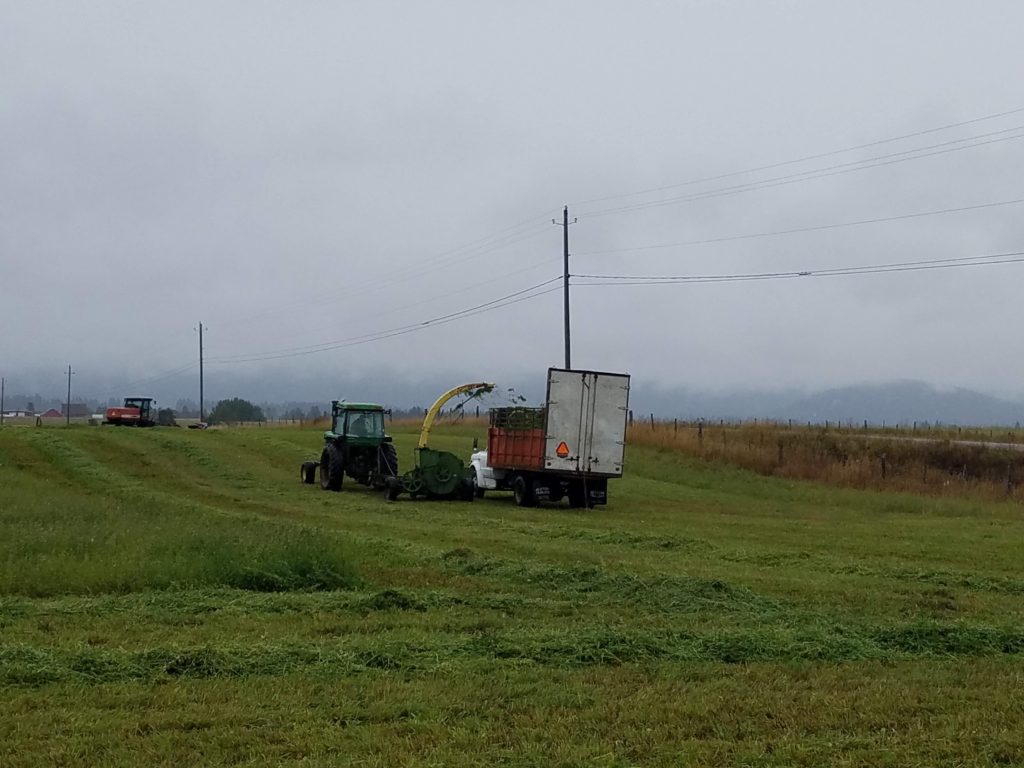
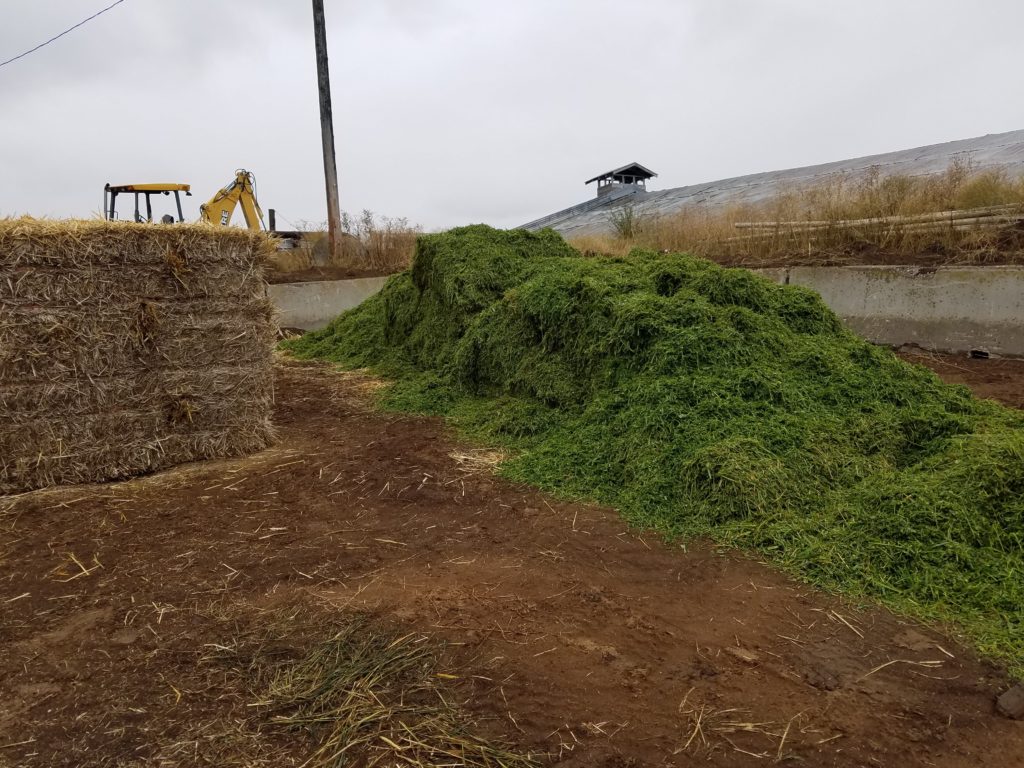
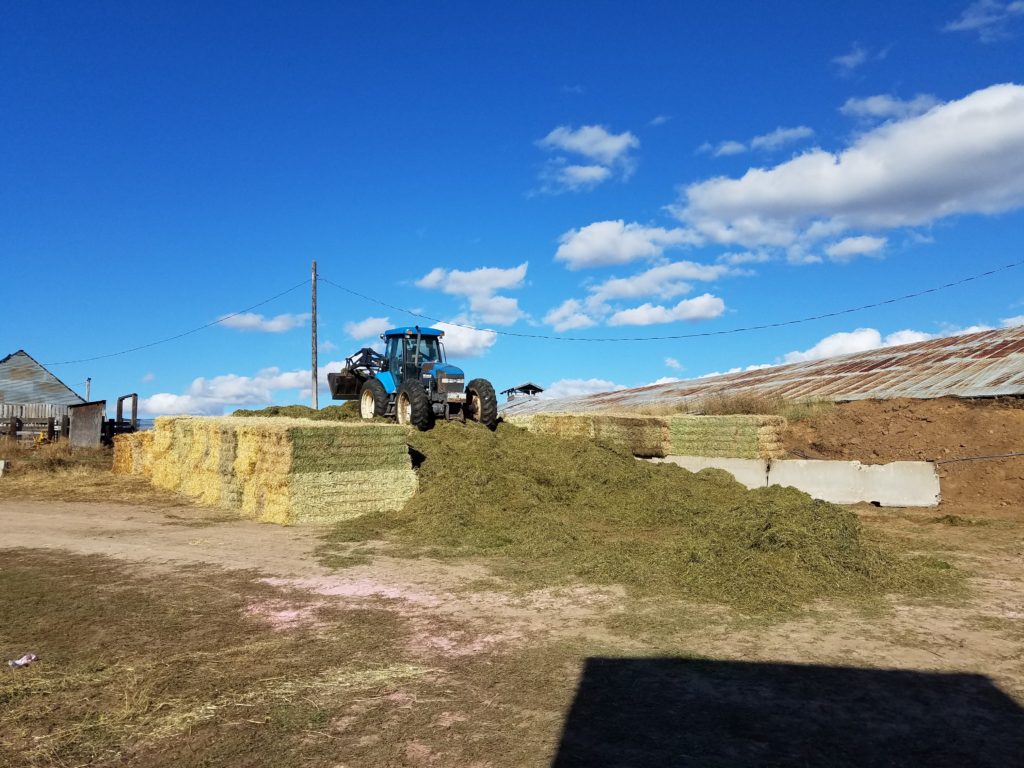
This last picture was my job. Packing the hay in the pit. After they would dump the hay, I would push it up with the tractor bucket, spread it out as best I could, then drive on it. Back and forth, trying to compact it. I thought it would be the easiest job. And it was pretty easy, except as the pile got higher it got a little more scary at times. Just as I was starting to feel pretty comfortable with what I was doing, the guys make some comment about being careful. I was like why? Did something change from yesterday? They just looked at me and said no, but the pile is higher and if you get to close to the side, the straw bales could slide out and then the tractor would tip. Oh geez! Is that all!?!! Panic moment! And as I am writing this, I just seen an article about a guy that died doing this very same job. His tractor tipped over off the side of the pit and crushed him. Dang!!! I probably would have picked a different job had I read that article before! Thankfully the guys did warn me and I stay way away from the sides. Probably a bit to much, but that’s ok. This was I am still here to blog about it.
That is my story on making islage, or we can say silage and the computer won’t red line me. (I switched computers..lol) The pit is all covered with plastic and fermenting as it’s suppose to. (hopefully) It’ll be interesting feeding this to the cattle this winter. It’ll take a bit more work by my Farmer to load it along with the hay to feed. But the cows are gonna LOVE it and they will LOVE their Farmer more for providing the tasty new treat. Thanks for reading along on one more of my “learning about farming” adventures. As I’ve said before I am always learning new things as I am Livin’ the Life, the Farm Life that is…..


